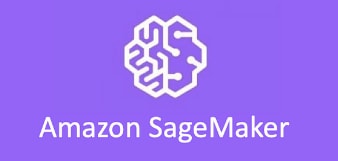Having recently immersed myself in the cutting-edge realm of Gen AI at this year's AWS re:Invent at Las Vegas, I eagerly dived into workshops and sessions dedicated to three standout AI platforms: AWS SageMaker, AWS Bedrock, and AI on EKS. The wealth of insights gained from these experiences prompted me to document and compare the diverse AI options available on AWS. Join me on this journey as we dissect the strengths, nuances, and unique features of each platform, offering a comprehensive guide for navigating the dynamic landscape of Gen AI solutions within the AWS ecosystem.
Generative Artificial Intelligence (Gen AI) has become a cornerstone of modern technology, enabling businesses to harness the power of Machine Learning and Large Language Models (LLM) for various applications. As the demand for AI solutions continues to grow, several platforms have emerged to facilitate the development and deployment of AI models. In this blog post, we will compare three prominent AI platforms available on AWS Cloud: AWS SageMaker, Bedrock, and AI on EKS (Elastic Kubernetes Service).
SageMaker: The Veteran Warrior
Amazon SageMaker is the granddaddy of AWS AI, a fully managed platform designed for end-to-end machine learning (ML) workflows. From data preparation and model training to deployment and monitoring, SageMaker streamlines the process, making it accessible to both ML experts and novices with more than 150 open-source models. Its pre-built algorithms, notebooks, and tooling take the grunt work out of ML, while robust scalability handles demanding workloads.
But is SageMaker the one-size-fits-all hero? Not quite. While powerful, it sacrifices flexibility. One needs to know how to use the service and is suitable for ML engineers for flexible model development.
Key features of SageMaker include:
End-to-End Workflow: SageMaker provides a seamless workflow from data labeling and preparation to model training and deployment.
Built-in Algorithms: A variety of pre-built algorithms are available, reducing the need for custom development and accelerating model training.
Scalability: With SageMaker, you can build, train, and deploy ML models at scale using tools like notebooks, debuggers, profilers, pipelines, MLOps, and more – all in one integrated development environment (IDE).
Bedrock: The New Kid on the Block

Bedrock takes a different route, focusing on the cutting-edge world of generative AI. This fully managed service provides access to pre-trained "foundation models" (FMs) like language and image generators. No need to build models from scratch - simply fine-tune these FMs to your specific needs. Bedrock promises speed and ease of use.
It offers a choice of high-performing foundation models (FMs) from leading AI companies like AI21 Labs, Anthropic, Cohere, Meta, Stability AI, and Amazon.
So, bedrock is the magic solution? Not entirely. Bedrock is young, and its FM options are currently limited when compared to Sagemaker.
Notable features of Bedrock include:
Ease of use: Using Amazon Bedrock, you can easily experiment with and evaluate top FMs for your use case, privately customize them with your data using techniques such as fine-tuning and Retrieval Augmented Generation (RAG), and build agents that execute tasks using your enterprise systems and data sources
AutoML Capabilities: Bedrock includes AutoML functionality, allowing users to automate the model selection and hyperparameter tuning processes.
Serverless: Amazon Bedrock is serverless, you don't have to manage any infrastructure, and you can securely integrate and deploy generative AI capabilities into your applications.
AI on EKS (Elastic Kubernetes Service): The Custom Craftsman
For those who need ultimate control and flexibility, AI on EKS comes knocking. This approach leverages Amazon Elastic Kubernetes Service (EKS) to deploy and manage containerized AI workloads. You get granular control over infrastructure, tools, and models, allowing for bespoke solutions.
Running AI workloads on Kubernetes has gained popularity due to its flexibility and scalability. AI on EKS brings Kubernetes to the forefront of AI development.
But is EKS the DIY path to AI nirvana? Be warned, this path requires significant expertise in Kubernetes and ML. It's a complex beast, demanding ongoing maintenance and potentially higher costs.
There is a vast ecosystem of tools available to build and run models, even within the Kubernetes landscape. One emerging stack on Kubernetes is Jupyterhub, Argo Workflows, Ray, and Kubernetes. AWS and the community call it the JARK stack and you can run this entire stack on Amazon EKS. You can also integrate with other workloads on EKS.
Refer for more details - https://aws.amazon.com/blogs/containers/deploy-generative-ai-models-on-amazon-eks/
Choosing the Right Tool
The best choice for you depends on your needs and priorities.
SageMaker: Ideal for established ML workflows, businesses prioritizing ease of use and scalability, and those comfortable with AWS tooling. Cost is based on Pay-as-you-go and depends on compute instances used for training and inference.
Bedrock: Perfect for experimenting with generative AI, those seeking quick solutions with pre-trained models, and businesses already using SageMaker. Cost is based on model inference and customization, with a choice of two pricing plans for inference: On-Demand and Provisioned Throughput, this is less expensive when compared to Sagemaker.
AI on EKS: Best for organizations with deep technical expertise, complex AI needs requiring specific customization, and those comfortable managing Kubernetes infrastructure and using EKS as their strategic platform for all of their Data and AI needs. Cost is based on the size and instance type of the cluster Infrastructure (Kubernetes-based).
Remember, there's no silver bullet. Each approach has its advantages and drawbacks. Carefully assess your requirements, evaluate your resources, and choose the tool that empowers you to conquer the AI frontier.
This post is just the beginning of your AI adventure. Stay tuned for further explorations into specific use cases and deep dives into these powerful tools!
Conclusion:
Choosing the right AI platform depends on specific project requirements, team expertise, organizational goals, and the existing ecosystem. AWS SageMaker, Bedrock, and AI on EKS each offer unique advantages, catering to different use cases and preferences. As the AI landscape continues to evolve, staying informed about the strengths and limitations of these platforms is crucial for making informed decisions in the rapidly advancing field of artificial intelligence.





Top comments (0)